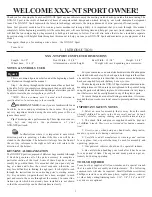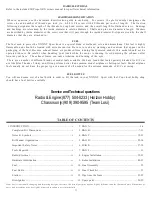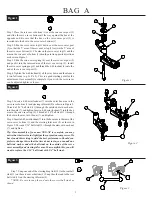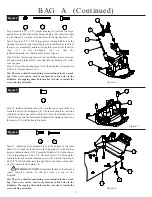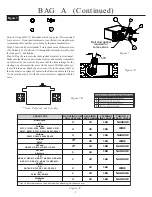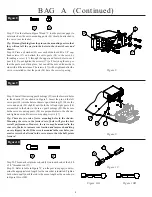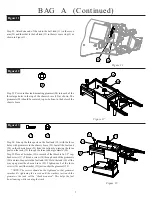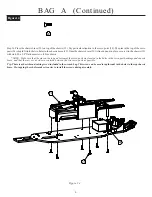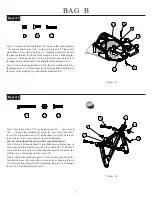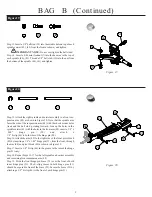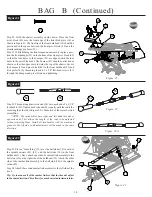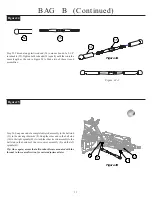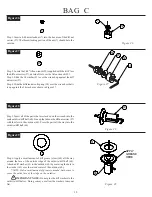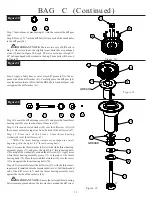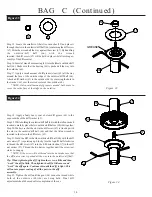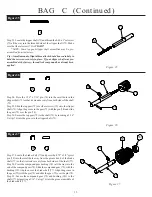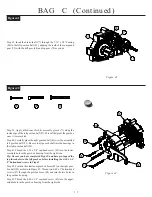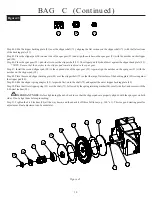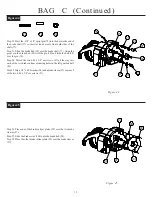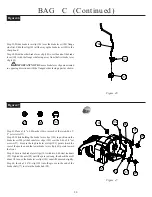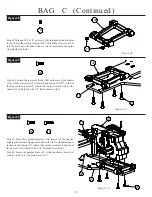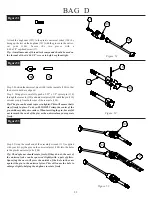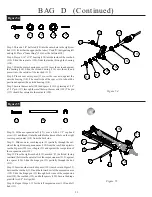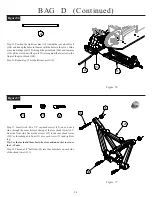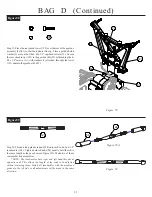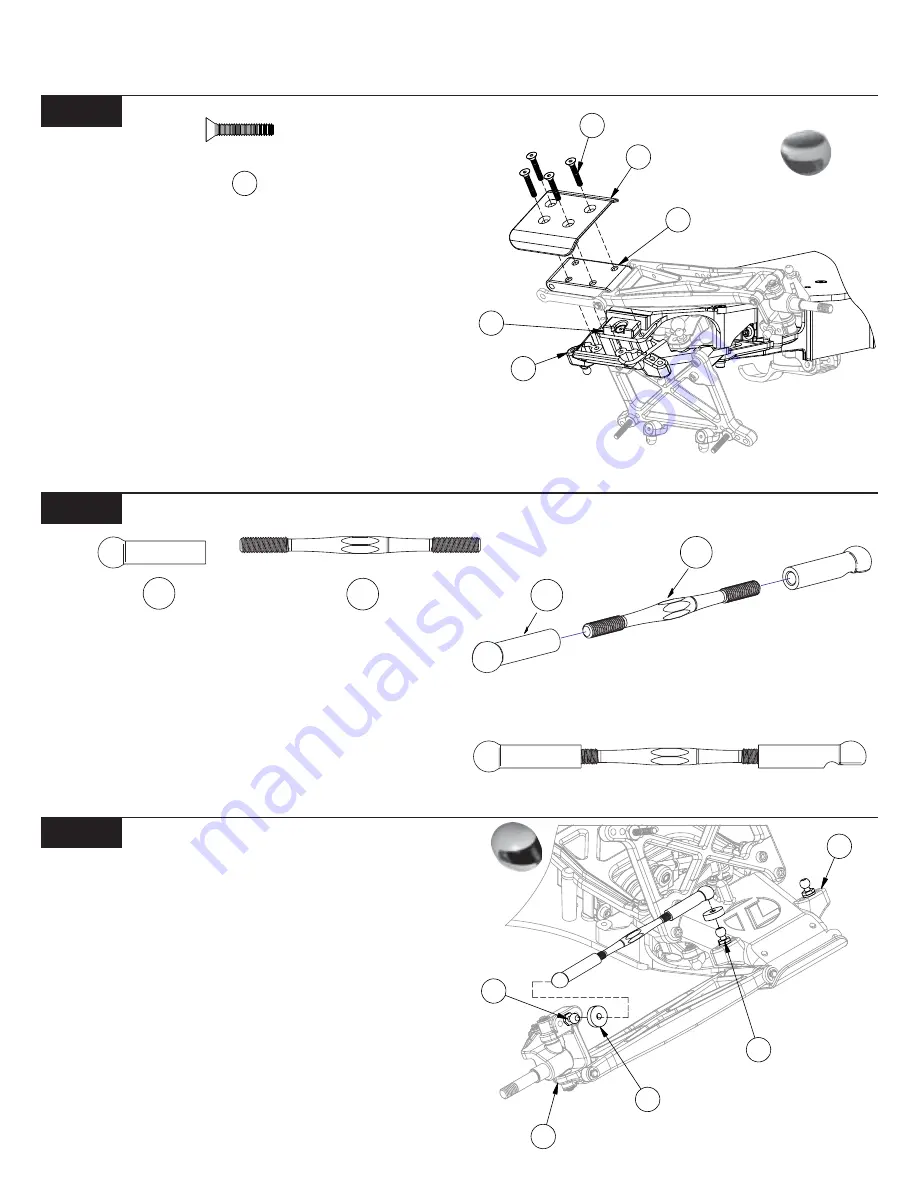
38
10
56
32
42
49
53
21
14
32
54
55
1 0
BAG B (Continued)
Figure 22
Step 22. Thread a long plastic rod end (54) onto each end of a 2-1/4"
turnbuckle (55). Tighten both rod ends (54) equally until the rod is the
same length as the rod in Figure 22A. Make two of these camber link
assemblies.
*NOTE: The turnbuckles have right and left hand threads at
opposite ends. This allows the length of the rods to be adjusted
without removing them. Install all turnbuckles with the machined
groove to the left side so all adjustments will be made in the same
direction.
Figure 22A
Figure 23
Step 23. Place a "foam thing" (56) over the ball studs (38) in each of
the spindle carriers (42), (43) and the ball studs (10) in the front
bulkhead (32). Next, attach one side of a camber link assembly to the
ball stud (10) on the right side of the bulkhead (32). Attach the other
side of the camber link assembly to the ball stud (38) in the spindle
carrier (42).
Step 24. Attach the second camber link assembly to the left side of the
truck.
Tip: Try to mount all of the camber links so that the threads adjust
in the same direction. This allows for much easier adjustments later.
Figure 21
Step 20. Hold the chassis assembly upside down. Place the front
pivot block (49) over the front edge of the front kick plate (14) as
shown in Figure 21. The front lip of the front bulkhead (32) should be
positioned in the space between the front pivot block (49) and the
aluminum hinge pin brace (52).
Step 21. While holding the front suspension assembly in place, posi-
tion the front bumper (53) on the bottom of the front pivot block (49)
so that the four holes in the bumper (53) are aligned with the four
holes in the pivot block (49). The bumper (53) should be attached as
shown so that the edges curve towards the top of the chassis. Secure
the bumper (53) and pivot block (49) to the front bulkhead (32) and
kick plate (14) by threading four 4-40 x 5/8" flat-head screws (21)
through the bumper and pivot block and tightening.
Figure 21
Figure 22
Figure 23
54
55
21


